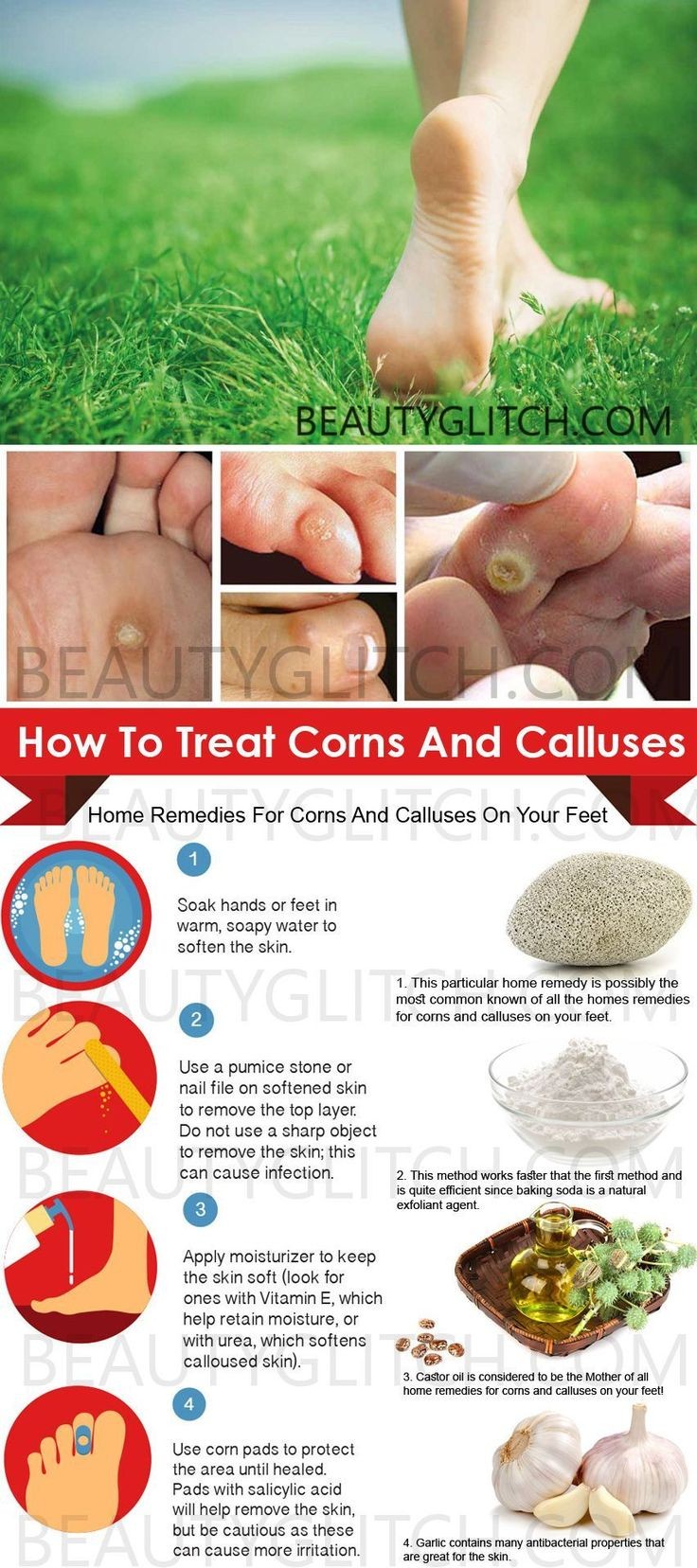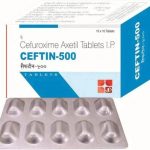
Contents
- 1 Corns and Calluses
- 1.0.1 Causes of Corns and Calluses
- 1.0.2 Risk Factors for Corns and Calluses
- 1.0.3 Symptoms of Corns and Calluses
- 1.0.4 When to Seek Treatment for Corns or Calluses
- 1.0.5 Doctors Who Treat Corns and Calluses
- 1.0.6 Diagnosis of Corns and Calluses
- 1.0.7 Treatments for Corns and Calluses
- 1.0.8 Prognosis for Corns and Calluses
- 1.0.9 Preventing Corns and Calluses
Corns and Calluses
Corns and calluses are annoying conditions that form thickened areas of skin due to excessive pressure. The medical term for these thickened areas is hyperkeratosis (plural=hyperkeratoses). Callus refers to a flattened area of thick skin, while corn is a thick localized area with a conical or circular shape. Corns are also known as helomas or clavi and can have a dry, waxy, or translucent appearance. Callus is also called tyloma.
Corns and calluses occur on the feet and sometimes on the fingers. Corns can be painful, even when small.
Common locations for corns include:
- On the bottom of the foot (sole or plantar surface), over the metatarsal arch
- On the outside of the fifth toe, where it rubs against the shoe
- Between the fourth and fifth toes
Unlike other corns that are firm and flesh-colored, corns between the toes are often whitish and messy, known as a "soft corn" (heloma molle) compared to the typical "hard corn" (heloma durum) found elsewhere.
Causes of Corns and Calluses
Hyperkeratosis occurs as a natural defense mechanism to strengthen the skin in areas of friction or excessive pressure. Abnormal foot anatomy, including deformities like hammertoe, can lead to corn or callus formation. Bony prominences in the feet can also cause thickening of the skin. Ill-fitting footwear or shoes that create friction can contribute to skin thickening. Abnormalities in walking or movement that increase pressure on specific areas can also be a cause.
Finger corns can develop without obvious pressure or rubbing at the site. Corns on the fingers may develop in response to tool use, playing musical instruments, or using work equipment that exerts pressure.
Risk Factors for Corns and Calluses
Any condition or activity that causes increased friction over the fingers or toes can lead to corn or callus development. While people of all ages can be affected, they are particularly common in individuals over 65 years old, affecting 20%-65% of this age group.
Risk factors include:
- Foot or toe anatomy abnormalities
- Gait abnormalities
- Bunions
- Poorly fitting shoes
- Tool, equipment, or instrument use that puts pressure on specific finger locations
- Occupations involving farming or gardening
Symptoms of Corns and Calluses
Common symptoms of corns and calluses include:
- Hardened, thick areas of skin
- Rounded or conical appearance
- Dry, scaly, or flaky skin
- Pain, especially when interfering with walking or activity
Calluses are typically painless.
QUESTION
When to Seek Treatment for Corns or Calluses
If corns are bothersome and do not respond to salicylic acid and trimming, it is recommended to consult a doctor or podiatrist who can physically remove the corns with scalpels. They can also measure and fit orthotic devices to redistribute weight on the feet to relieve pressure on corns. Off-the-shelf cushioned insoles may not be effective as they are one size fits all.
For individuals with fragile skin or poor circulation in the feet, seeking medical care for corns or calluses is essential. Immediate medical care is necessary if corns or calluses show signs of infection such as increasing pain, presence of pus or drainage, swelling, and redness.
Surgical removal of corns is rarely necessary as it may recur if the underlying pressure or friction is not addressed. When necessary, corn surgery involves shaving the underlying bone or correcting deformities causing pressure or friction on the skin.
Doctors Who Treat Corns and Calluses
- Primary-care specialists like internal medicine or family medicine doctors
- Podiatrists, foot disorder specialists
- Surgeons, in some cases
Diagnosis of Corns and Calluses
The characteristic changes in the skin can be observed for diagnosis. Specialized tests are not necessary.
Treatments for Corns and Calluses
Various medicated products can be used to chemically remove the thickened, dead skin of corns and calluses. Many over-the-counter remedies containing salicylic acid are available. Salicylic acid dissolves the protein (keratin) that makes up the corn and the thick layer of dead skin on top of it. These products are generally safe and gentle when used as directed. Salicylic acid treatments come in different forms:
- Topical liquid solution
- Gel or cream
- Medicated patches
These treatments cause the top layer of skin to turn white, allowing the dead tissue to be trimmed or peeled away, reducing the pain of corns.
Salicylic acid should not be used by individuals with diabetes, poor circulation, or frail skin, as it may potentially cause skin ulcers. A healthcare professional can determine if salicylic acid-based products are safe for an individual.
It is not recommended to cut or shave corns and calluses at home, as it can lead to dangerous infections. Podiatrists or healthcare professionals should perform this procedure. Antibiotics may be prescribed if corns or calluses become infected.
Prognosis for Corns and Calluses
Corns and calluses can be managed with home remedies or medical treatment and are not serious conditions. Surgery is rarely necessary. However, corns and calluses may recur if pressure or friction on the affected area continues. They do not increase the risk of skin cancer or other serious conditions.
Preventing Corns and Calluses
Corns and calluses can often be prevented by reducing or eliminating circumstances that increase pressure on the hands and feet. Prevention measures include:
- Wearing well-fitting comfortable shoes
- Padding affected areas with cushions, foam pads, or cushioned insoles
By clicking Submit, I agree to the MedicineNet’s Terms & Conditions & Privacy Policy and understand that I may opt out of MedicineNet’s subscriptions at any time.
Kasper, D.L., et al., eds. Harrison’s Principles of Internal Medicine, 19th Ed. United States: McGraw-Hill Education, 2015.
Kasper, D.L., et al., eds. Harrison’s Principles of Internal Medicine, 19th Ed. United States: McGraw-Hill Education, 2015.


